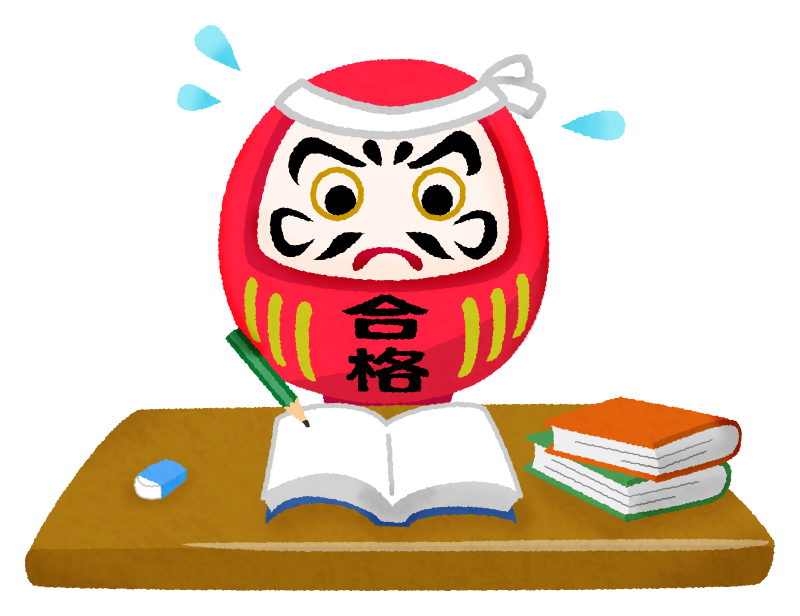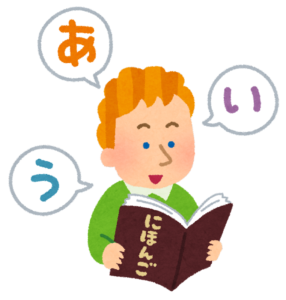Learn Japanese “the Easy Way”

Ok, I apologize; I have deceived you. As you might have guessed, there is no quick and easy way to learn Japanese. It is undeniably a difficult language to learn. In fact, if English is your first language, then Japanese is usually ranked in the top 10, sometimes even the number 1 , most difficult languages to learn. Also, there are very few native Japanese speakers outside of Japan – only 7 million in the rest of the world. It’s difficult to practice before coming to the country. And unless you go into translation, not much use once you leave.
But don’t despair! It is still possible to learn Japanese and reach whatever standard you’re going for. Whether that means ordering in a restaurant, having conversations with friends or watching a TV show. Just because it’s not easy, doesn’t mean that you can’t try to find the best path to learning. So here are some tips, hints, tricks and warnings about how to find convenient ways to learn and practice Japanese that best suit you.
But First: Why?
Before we leap into the wild and confusing world of the language itself, or the forest of different learning options, let’s take a look at why we might want to study Japanese in the first place. There are plenty of things to consider. Aside from some of the more obvious reasons, a really important one is that learning a language helps you to teach. Not only does it set a good example for your students and fellow teachers, that you’re actually making the effort to learn a language yourself, but it helps you understand the process.
A more obvious reason is that it will help you make the most out of living in Japan. It’s of course handy to get by in day to day life, but also, there are few things more satisfying than making new friends and speaking with them in your new language – no matter how basic your conversations may be at first. Moments like that can open your eyes to a whole new culture. There are plenty of other personal benefits. Learning a new language is great brain training, and it will give you new skills to learn lots of other things too.
Ultimately, and this is perhaps the most important thing, it can be fun. If you can turn it into a game, or a relaxing activity, it can be really rewarding. The enthusiasm you gain can be something you can pass onto your students and make work more enjoyable and fulfilling too.

Courtesy of Japaclip https://japaclip.com/en/daruma-studying-for-entrance-exam/
The Basics of Speaking/Listening
I have to make another confession. I’m no Japanese language expert. I’ve been learning since I arrived in Japan, about two years ago. In that time I have just managed to pass the Japanese Language Proficiency Test, N5, the most basic level. However, there are some interesting details about Japanese that are good to know if you’re a complete beginner.
 First off, the good news: it’s not all difficult. Basic pronunciation is actually quite easy for an English speaker. There are not many sounds in Japanese that we don’t have in English, unlike in Russian, Arabic or Chinese for example. All words are generally made up of small groups of consonants and vowels, for example; ka, ki, ku, ke, ko, ta, ti, tu, te to.
First off, the good news: it’s not all difficult. Basic pronunciation is actually quite easy for an English speaker. There are not many sounds in Japanese that we don’t have in English, unlike in Russian, Arabic or Chinese for example. All words are generally made up of small groups of consonants and vowels, for example; ka, ki, ku, ke, ko, ta, ti, tu, te to.
There as some exceptions like ‘n’, but not many. There’s a few sounds that are a bit tricky, like ‘r’ being somewhere between the sound of ‘r’ and ‘l’ in English. If you immerse yourself in listening to a lot of Japanese you should be able to pick it up ok.
The Basics of Writing/Reading
The next easy thing is; there’s no spelling. Everything in Japanese is phonetic, it is read exactly as it is shown on the page – well, almost. The writing system starts off easy. The first two writing systems, Hiragana and Katakana, are a bunch of symbols, each of which has their own sound. There are 46 of these each, or 71 if you include special combinations. Once you’ve learned all of these, you should in theory be able to read anything.
 Unfortunately it’s not quite that simple. There are also over 50,000 kanji, or Chinese characters. These are admittedly a bit of a nightmare, but you can get by with the first 1,000 most commonly-used ones. Most native Japanese speakers don’t know anywhere near all of them. That said, I’m not going to sugar coat it; they are difficult to learn. Each kanji has at least two different readings and they can be really difficult to remember and distinguish. It takes time, but it’s worth the effort. Learning anywhere between 1-5 a day is easily attainable. And you can start with these five!
Unfortunately it’s not quite that simple. There are also over 50,000 kanji, or Chinese characters. These are admittedly a bit of a nightmare, but you can get by with the first 1,000 most commonly-used ones. Most native Japanese speakers don’t know anywhere near all of them. That said, I’m not going to sugar coat it; they are difficult to learn. Each kanji has at least two different readings and they can be really difficult to remember and distinguish. It takes time, but it’s worth the effort. Learning anywhere between 1-5 a day is easily attainable. And you can start with these five!
Learning it the New Way
So, that all seems a bit daunting, right? Luckily, as Japanese is a relatively popular language to learn nowadays (almost 4 million learners ), there are plenty of handy tools out there to help you learn. My biggest single piece of advice is to first find a language learning app. There are many to choose from, and everyone has different preferences for what works for them. Try and find one that works for you.
Whilst each one may have a different approach, as long as it helps you do even a tiny bit of daily practice, they can all be helpful. Some of the most popular ones are Pimsleur Japanese, JA Sensei, Human Japanese, HelloTalk, Duolingo, and WaniKani. Have a search and see which ones you like. There are also plenty of YouTube channels for a wide range of abilities; I especially recommend Japanese Pod 101 and JapaneseAmmo. There are plenty of websites to choose from too.
Learning it Old-School
 All these new technological ways of learning are all well and good, but let’s not forget some of the tried and tested traditional methods. When it comes to textbooks, there are many different things to consider and a bewildering array of choice too. Genki is probably the most popular and well-known, but there are plenty of others to choose from too. There’s Japanese from Zero for beginners or Minna no Nihongo (“Japanese for Everyone”) for a more thorough guide.
All these new technological ways of learning are all well and good, but let’s not forget some of the tried and tested traditional methods. When it comes to textbooks, there are many different things to consider and a bewildering array of choice too. Genki is probably the most popular and well-known, but there are plenty of others to choose from too. There’s Japanese from Zero for beginners or Minna no Nihongo (“Japanese for Everyone”) for a more thorough guide.
Of course, nothing beats a real lesson. If you’re lucky, you might be able to find some at a local community center. You can look online at websites like italki, where you can pay to have an online lesson with a teacher or a native speaker. If you can’t find a native speaker to practice with online, try immersing yourself in the language through TV, films, music, anime. Even better, get out there and meet people!
In Conclusion (For Now)
Overall, remember that learning Japanese needn’t be a terrifying and impossible scary task. Take control of it, do your research and have fun! You’ll be surprised just how quickly you can start learning and how satisfying it will be when you do. Your journey has only just begun, and there’s much more to come. But for now, you can take the first step!
Image Credits:
Cover Photo by Dhafin Kumarajati on Unsplash
1 – Copyright Japaclip.com (used under ‘Terms of Use’ permission)
RELATED
-

Learn Japanese in 5 Steps!
Top photo: StockSnap on Pixabay Okay, I might have oversimplified in the title. Sure, I’ve broken it down into… -

Speaking vs Communicating in Japanese
Top photo: Claudio Guglieri on Unsplash Can you communicate in Japanese? Yes, communicate! Believe it or not,… -

Four Japanese Philosophies For You
Top photo: Ryoji Iwata on Unsplash Japan is rich with philosophical ideas that come from Zen Buddhist philoso…
PEOPLE

The MUSUBI Staff
Collaborative works put together by our many talented writers and editors!


